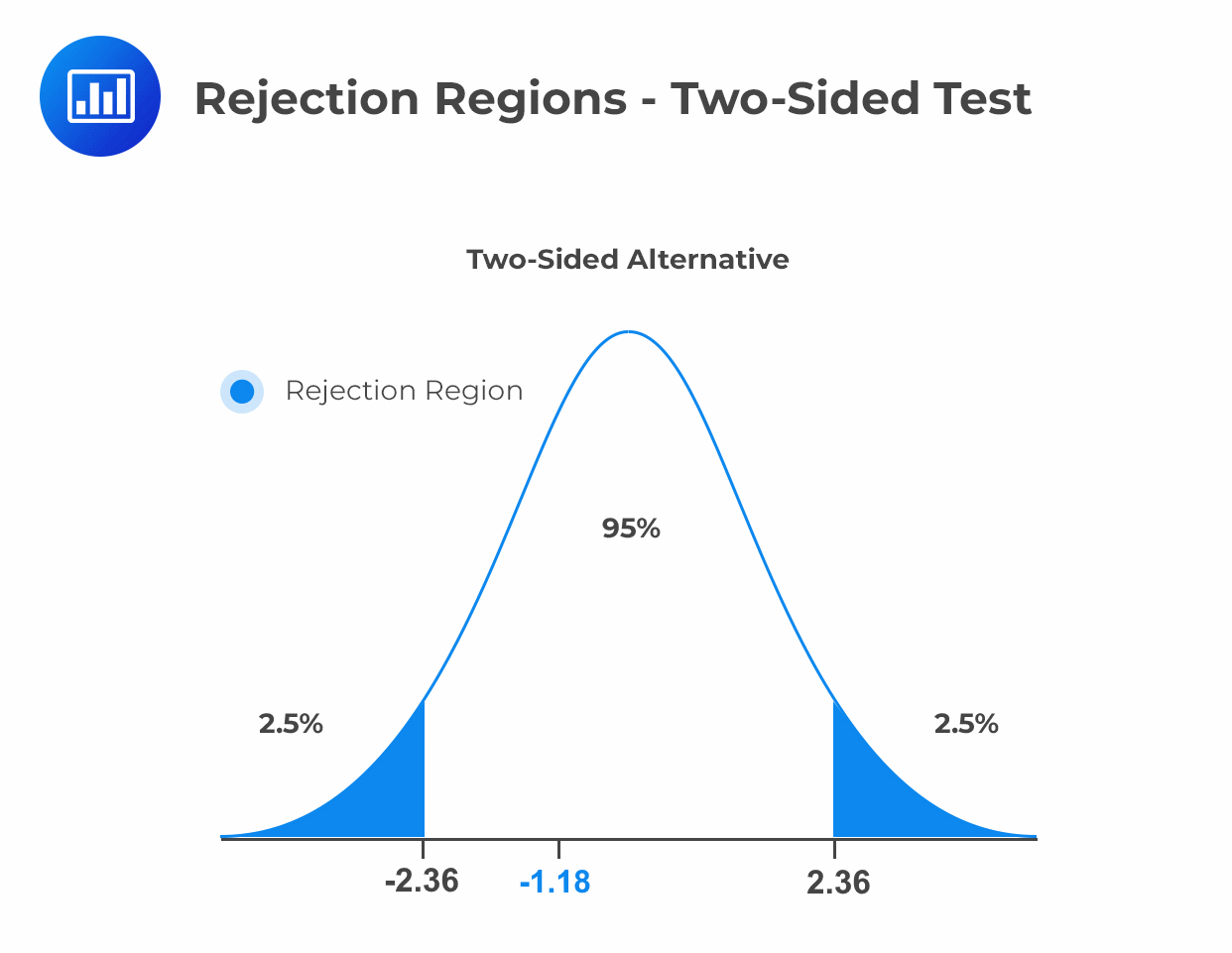Foreign Currency Transaction Exposure: ...
Foreign currency transaction exposure is the risk of the exchange rate fluctuating before... Read More
The following results are obtained from regressing the price of the US Dollar Index (USDX) on inflation rates and real interest rates.
$$\small{\begin{array}{l|c}\textbf{Regression Statistics}\\ \hline\text{Multiple R} & 0.8264\\ \hline\text{R Square} & 0.6830\\ \hline\text{Adjusted R Square} & 0.5924\\ \hline\text{Standard Error} & 5.3537\\ \hline\text{Observations} & 10\\ \end{array}}$$
$$\small{\begin{array}{l|l|l|l|l}{}& \textbf{Coefficients} & \textbf{Standard Error} & \textbf{t Stat} & \textbf{P-value}\\ \hline\text{Intercept} & 81 & 7.9659 & 10.1296 & 0.0000\\ \hline\text{Inflation rates} & -276 & 233.0748 & -1.1833 & 0.2753\\ \hline\text{Real interest Rates} & 902 & 279.6949 & 3.2266 & 0.0145\\ \end{array}}$$
Test the null hypothesis that the inflation rate is equal to 0 against the alternative hypothesis that it is not equal to 0 at the 5% significance level and interpret the results
We are testing the hypothesis:
\(H_{o}:b_1=0\) vs. \(H_1:b_1≠0\)
The 5% two-tailed critical t-value with \(10 – 2 – 1 = 7\) degrees of freedom is 2.365

The null hypothesis is rejected if the t-statistic is either greater than 2.365 or smaller than –2.365 (the critical value).
$$t=\frac{\widehat{b_{j}}-b_{H0}}{S_{\widehat{b_{j}}}}$$
$$\begin{align*}t&=\frac{-276-0}{233.0748}&\\&=-1.18\end{align*}$$
The t-statistic of -1.18 is between the upper and lower critical t-values of –2.3646 and 2.3646. We cannot reject the null hypothesis and must conclude that the inflation rate regression coefficient is NOT statistically significantly different from 0 at the 5% significance level.
 Reading 2: Multiple Regression
Reading 2: Multiple Regression
LOS 2 (d) Interpret the results of hypothesis tests of regression coefficients